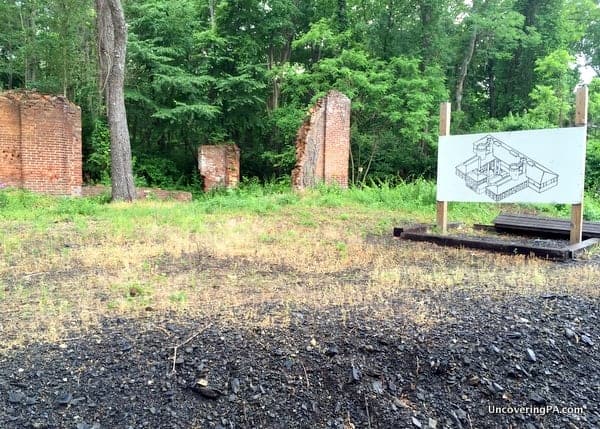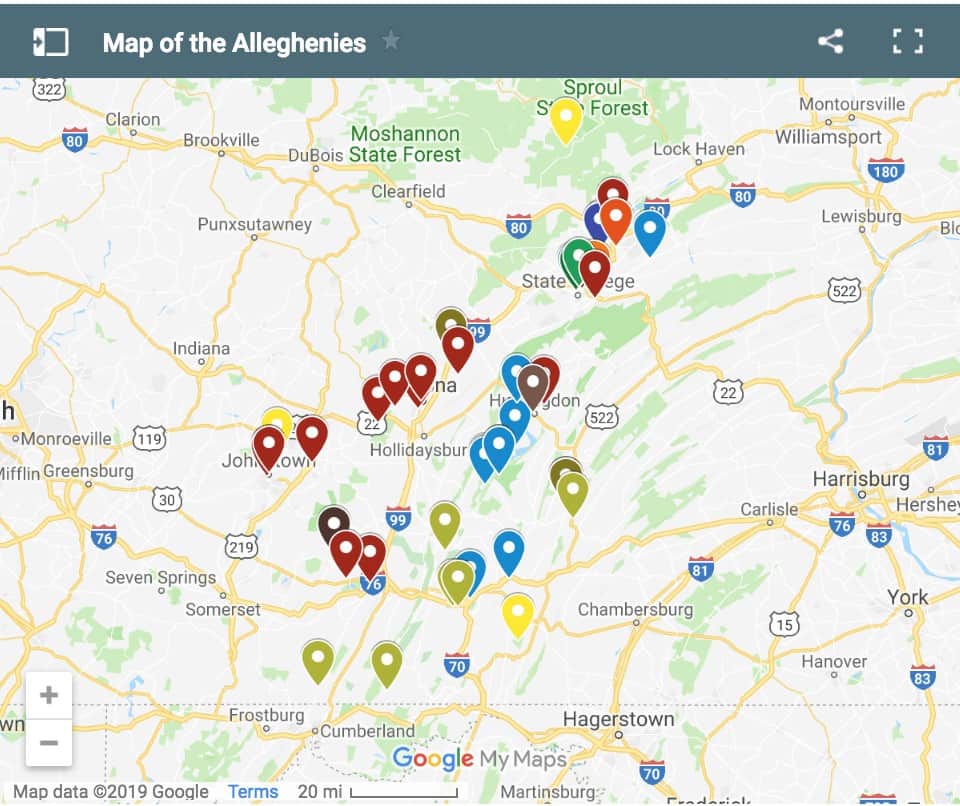The rural countryside of Huntingdon County is a bit of a strange place for a trolley museum. After all, trolleys used to run in large cities and out to their suburbs, but the closest trolley line to Rockhill, Pennsylvania, ran in Huntingdon, more than 20 miles away.
So, how did Pennsylvania’s first trolley museum end up here along a forgotten stretch of Route 522? Simple, there was track available. The Rockhill Trolley Museum uses space and track that was once used by the East Broad Top Railroad.

The East Broad Top Railroad, which sits next to the museum, is one of the best-preserved narrow-gauge railroads in the country. And, while it was closed for about a decade, it is once again offering train trips on the same days that the Rockhill Trolley Museum is open, which makes it a great way to spend a day exploring Huntingdon County by rail.
However, even if you only have time to do only the Rockhill Trolley Museum, this is still a great place to visit. And, what the museum lacks in authentic track and location, it makes up for with a great operation and a high-quality collection.
The Rockhill Trolley Museum uses the term museum very loosely. Instead of being somewhere with signage and artifacts behind glass, it is instead a living history museum. Here, you can see trolleys in all states of restoration and ride some of the more well-preserved items in their collection.

Riding on a historic trolley is the highlight of any trip to the Rockhill Trolley Museum. Trips leave from both the ticket window and outside the museum store and run 1.5 miles through a forested countryside.
Along the way, your conductor will explain a bit of the trolley’s history, how it works, and what you are seeing along the way.
The trolley I rode in was a beautifully restored 1925 St. Louis Car Company trolley that once plied the streets of Johnstown. Given the beautiful state the trolley was currently in, it is hard to believe that it was in operation for more than 30 years. This trolley was acquired unrestored from another museum in 1970.

The trolley trip along the museum’s track doesn’t have as much to see as the Electric City Trolley Museum in Scranton, but there are still a few points of interest along the route. The first is the ruins of the Rock Hill Iron Furnace, which stood on the site from the 1860s through 1908. While little is left of the building, the brick shell of the furnace is still interesting to look at.
On the other side of the tracks, you might notice large piles of rocks. These are actually slag from the iron furnace. These rocks are what remain after the iron has been melted out of them and line the forested hillside around the area.

At the end of the line, near Route 522, the trolley makes a brief stop to switch operating ends, before returning back to the main museum area.
Along the way, you’ll pass Carbarn 2. This is where many of the museum’s long-term projects are housed. While tours are not always available due to staffing levels, it can be interesting to see some of the more dilapidated trolleys in the collection if a tour can be secured.
During my visit, this barn was home to several interesting trolleys from Porto, Portugal, a trolley that used to run along the streets of Harrisburg, and an 1895 trolley from Valley Railways near Harrisburg.

Back at the museum store, take a tour of Carbarn 1, which houses many of the trolleys that are in working or near-working order. The entire collection consists of about two dozen trolleys, of which only a handful are run regularly as part of tours.
During my visit, this barn was home to several fascinating pieces, including a 1912 Rio de Janeiro Tramways trolley from Brazil. This is one of the few open-air trolley cars in Pennsylvania and is lined with very beautiful Brazilian redwood, which is very difficult to import due to environmental concerns.
Another interesting piece was the Philly and Western Railway bullet car, which ran 85 miles per hour in 1931, which is faster than almost all current trains in America.
Next to Carbarn 1 is the museum’s restoration area. Here, volunteers work to restore some of the trolleys in the collection. During my visit, they were working on a 1909 trolley car from Chicago and a 1922 car from Johnstown, the museum’s first piece from 1960.

Before leaving, make sure to pop your head into the museum store, which features a small area with informational signage, souvenirs, and snacks. Should you wish to ride the trolley again, tickets are good for unlimited rides during regular operating days, so hop back on and experience the excitement of riding the trolley all over again!
Overall, I really enjoyed visiting the Rockhill Trolley Museum. While there isn’t much to do besides the short trolley ride and viewing a few old trolleys in the barns, anyone with an interest in trains or who has never had the opportunity to ride a historic trolley should enjoy the museum.
The volunteers do a great job of bringing the experience to life and make the museum well worth visiting when traveling near Raystown Lake and the greater Huntingdon Area.




 "
"




The trolleys are now running Wednesday thru Sunday. The train is now also running come visit.